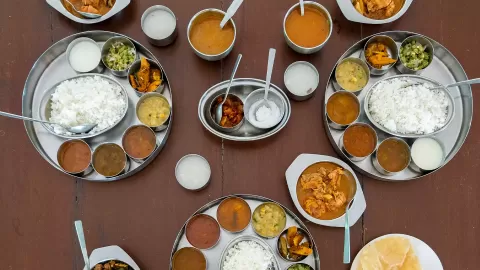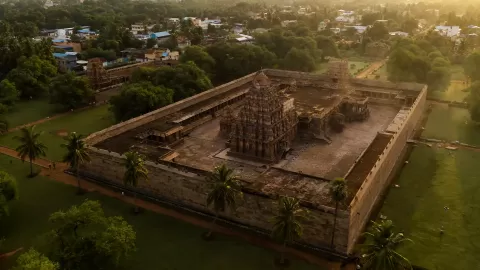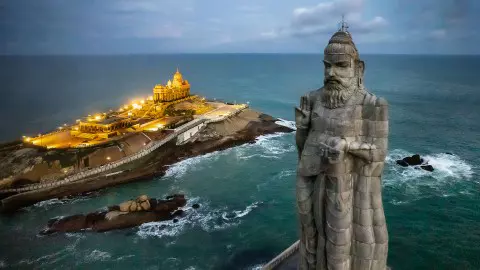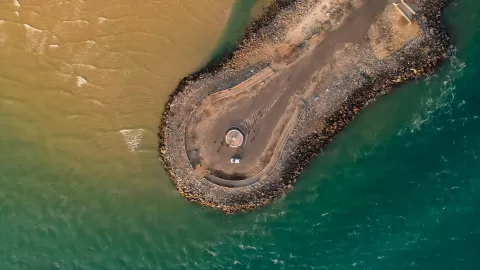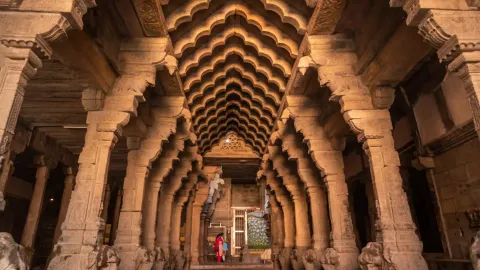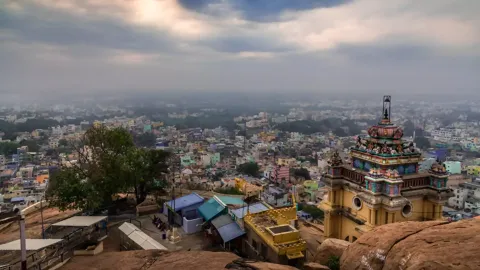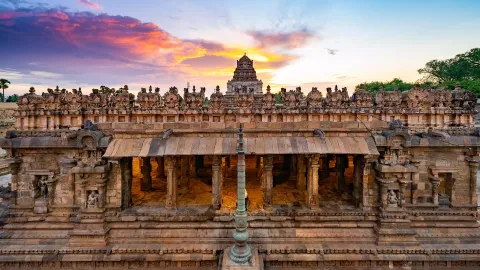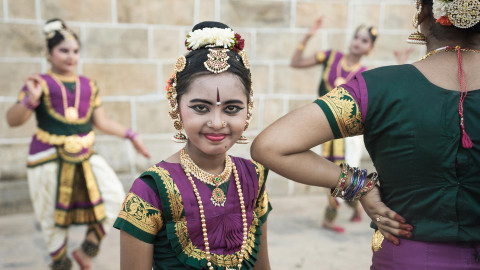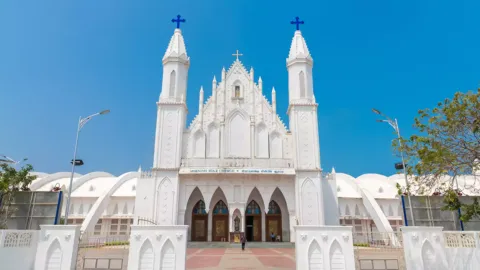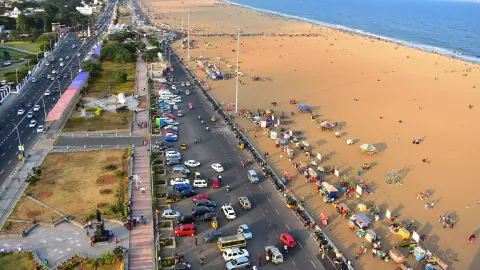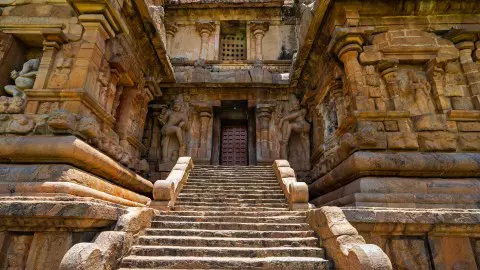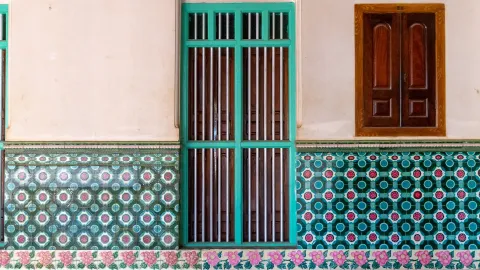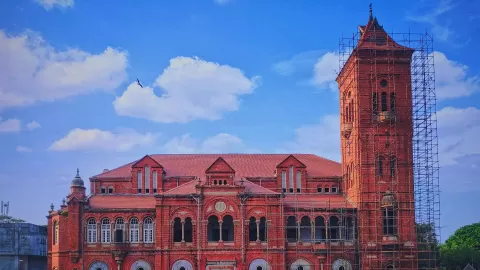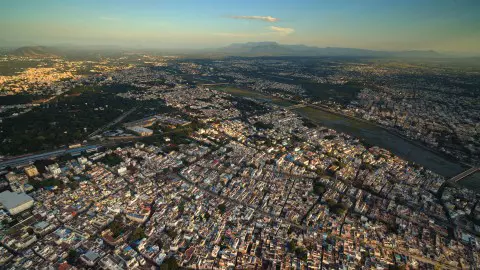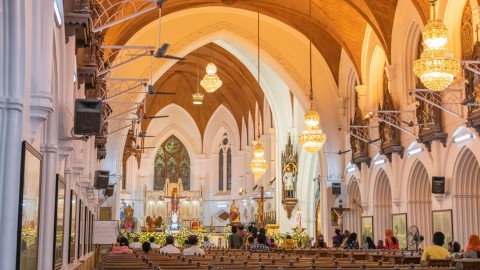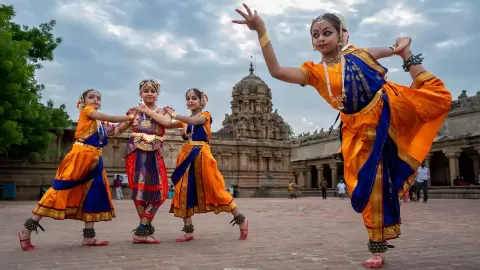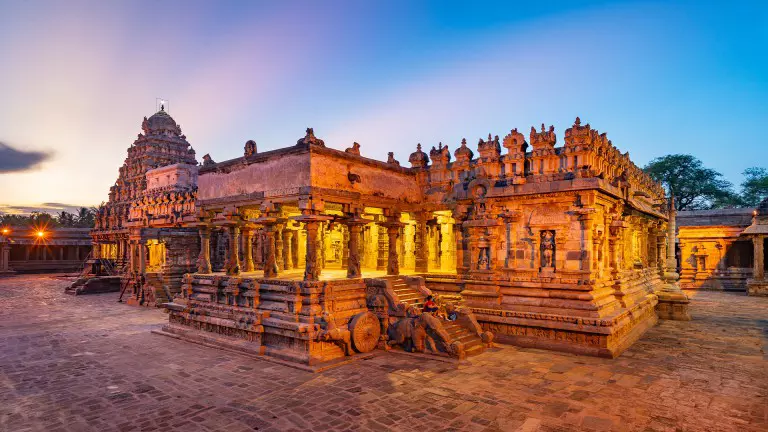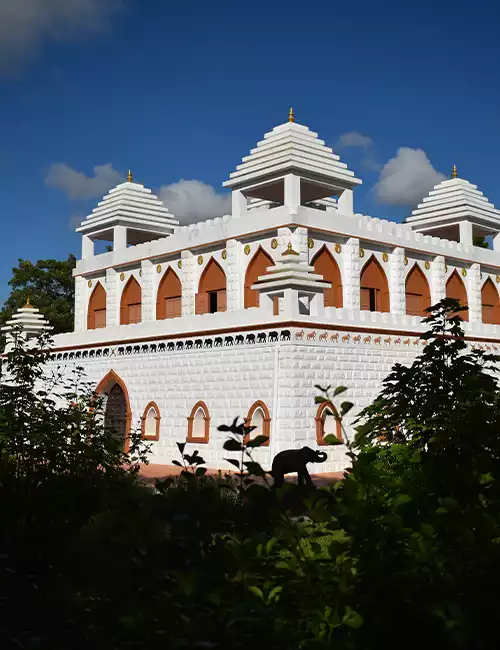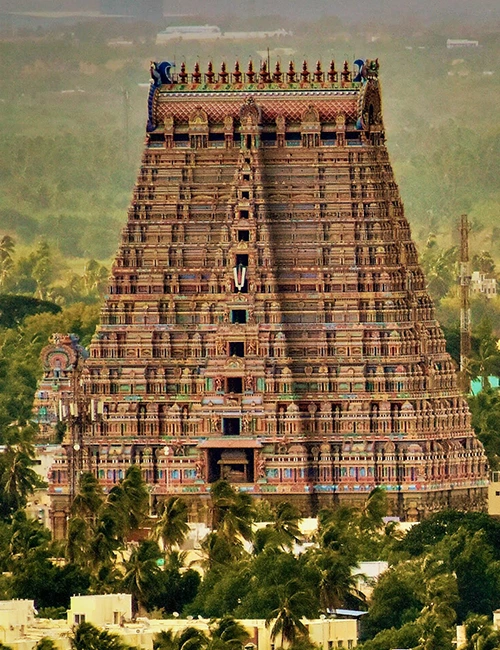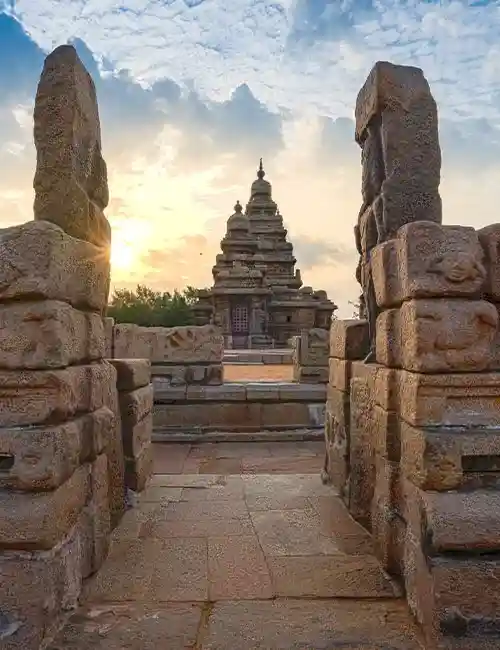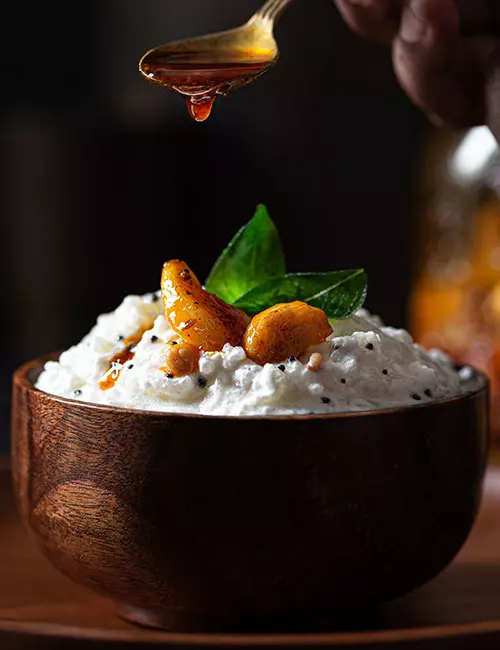
Often overlooked by the crowds who flock to Delhi and Mumbai, fascinating, foodie Chennai is the gateway to India’s steamy south. Within easy striking distance of the Tamil Nadu capital are timeless temple towns, coastal nature reserves, old colonial outposts and beach resorts that are as popular for monsoon watching as sitting on the sand.
Like other big Indian hubs, Chennai is fast-paced and frenetic, as you might expect from a city of eight million people. And the city can swelter like a tandoori oven in the tropical heat, particularly in the run-up to the June–September monsoon. For optimum conditions for exploring, come between November and March during the mild Indian winter.
Most visitors are happy to devote a few days to Chennai's food, markets and towering temples, but when the crowds overwhelm, it's easy to escape to quieter spots along the coast and inland by bus or train. Here's a guide to the top day trips from Chennai.
Try surfing, Indian-style, at Kovalam (Covelong)
Just 30km (18.6 miles) south of Chennai, the slumbering fishing village of Kovalam (Covelong) – not to be confused with the Keralan beach town of the same name – has found its mojo as Tamil Nadu’s favorite surf spot, helped by powerful beach and reef breaks that perform best from June to September. In winter, it's worth coming just for the calm mood and the beach.
The agreeably informal surf scene at Kovalam owes its existence to Indian surfing pioneer Murthy Megavan, who discovered the waves as a child and learned to surf on old wooden planks before borrowing his first board from ‘surfing swami’ Jack Hebner.
Today, he runs the Covelong Point surf school, close to the village’s best right-hand break. As well as surf classes, you can learn to paddleboard, kayak and windsurf, and tune in, flex up, and rock out at the school's Surf.Yoga.Music Festival in August or September (check to see if it has resumed following the pandemic).
How to get to Kovalam: Kovalam is accessible via the hourly 599 city bus from Chennai’s T Nagar Bus Depot (one hour), which runs on to Mamallapuram. Routes 109 and 119 also pass this way.
Discover a riot of carvings in temple-tastic Mamallapuram (Mahabalipuram)
Just a short bus ride south from the center of Chennai, Mamallapuram (Mahabalipuram) was once the principal seaport of the powerful Pallava kingdom, whose rulers filled the shoreline with some of India’s most eye-catching temples and shrines. The town is still a lively hub for stone-carving today.
Thanks to its fine collection of temples and shrines, this one-time fishing village has grown into a lively pilgrim center, traveler hub and beach retreat. Right on the water, you’ll find the twin-spired Shore Temple, a glorious stack of carved tiers which once opened directly onto the sand, and Arjuna’s Penance, a house-sized boulder carved with scenes from the Hindu epic, the Mahabharata.
Just inland, the rocky outcrop of Mamallapuram Hill is crowned by a riot of temples, carvings and balancing boulders, linked by well-worn walking paths. After exploring, cool down with a surf class at Mumu Surf School, or a backpacker bite at Le Yogi, before jumping on the bus back to Chennai.
Getting there: Bus 599 runs hourly throughout the day from Chennai’s T Nagar Bus Depot, taking up to two hours, depending on the traffic. In the opposite direction, the bus runs till 8:40pm, giving you plenty of time to explore.
Get in a flap over flamingos at Pulicat Lake
From December to January, the brackish lagoon at Pulicat attracts legions of long-legged, shrimp-loving visitors, and a dedicated crowd of bird-watchers intent on spotting them. At the height of the winter season, the colony of greater flamingos in the Pulicat Lake Bird Sanctuary can swell to 15,000 birds, painting the waters pink.
The lagoon is also a migratory stop for spot-billed pelicans, herons, egrets, spoonbills and storks. Flamingos can be spotted from many points along the banks, including the road between Sullurupeta and Sriharikota.
Birds aren’t the only reason to come to Pulicat – the village is home to several impressive temples, a lighthouse that can sometimes be climbed, an atmospheric Dutch-colonial cemetery (complete with carved skeletons guarding the gates) and the ruins of Fort Geldria, the first Dutch outpost in India.
How to get to Pulicat: Pulicat is 60km (37 miles) north of Chennai. The best way to get here is to hire a taxi for the day in Chennai, so you can roam around easily once you arrive; allow 1½ hours each way for the journey. To come by public transport, take city bus 595 from Chennai’s Toll Gate Bus Depot or bus 558B from Moolakadal (two to three hours).
Temple-hop through the centuries in Kanchipuram
If you’ve seen the artistry the Pallava kings put into their seaport at Mamallapuram, you’ll be perfectly primed for a trip to their capital, Kanchipuram. This inland temple town, 80km (50 miles) southwest of Chennai, overflows with extravagant, hand-carved temples, whose stones were slotted together by a succession of Hindu dynasties from the 4th to the 11th centuries.
On the outskirts of town, the Kailasanantha Temple features the same angular tiers and wall-topping Nandi (bull) statues as Mamallapuram’s Shore Temple, but on an even grander scale. Back in the center, the Kamakshi Amman Temple and Ekambareshwara Temple are classic examples of the Dravidian temple style, crowned by soaring gopurams (temple towers) covered in a writhing panoply of deities. However, only Hindus can enter the inner sanctums.
Pause for a fiery south Indian thali (plate meal) or dosa (rice and lentil pancake) at Hotel Saravana Bhavan before you hightail it back to Chennai.
How to get to Kanchipuram: Suburban trains rumble out from Chennai’s Egmore station every hour or so (two hours) until the early evening. Alternatively, squeeze onto one of the frequent but crowded public buses from Chennai Mofussil Bus Terminus.
Find fancy fortifications in Vellore
To consolidate their control over the region, European colonial powers built great forts all over southern India, and in some cases simply took over existing fortifications built by local rulers. Ringed by 2km (1.2 miles) of moat-flanked walls, the imposing fort at Vellore was at various times Hindu, Muslim and Christian, as wave after wave of conquerors passed through its battlements.
Wandering around the calm, dusty interior today, you’ll find Muslim mosques and pavilions, a tidy little Christian church and the sky-piercing Jalakantesvara Temple, with its gleaming white gopuram (temple tower) dominating the skyline. Appropriately, in 1806, this was the setting for the first rebellion by Indian troops against their British commanders.
Otherwise, Vellore lies off the mainstream circuit, which provides another reason to visit: to sample life in an Indian town that doesn’t rely on tourism for its existence. The local branch of Hotel Saravana Bhavan serves up a vegetarian feast of idlis (steamed rice cakes), dosas and thalis.
How to get to Vellore: Buses zip regularly between Chennai Mofussil Bus Terminus and Vellore (up to three hours). Air-con Volvo buses are more comfortable than the crowded public buses. Alternatively, take the fast train from Chennai Central (2½ hours).
Relish the French flair of colonial Puducherry (Pondicherry)
Alongside the British and Portuguese, the French established their own colonial outpost on the coast of India at Puducherry – formerly Pondicherry – and the streets of this curious outpost of la belle France are still dotted with European-style villas, coffee shops and cathedrals. The government of France ruled this tiny corner of Tamil Nadu until 1954, when locals voted overwhelmingly to become part of India following a vote of independence.
Today, the main appeal is wandering the unmistakably European-influenced streets, chilling out in cafes and peeking into pastel-colored French-era churches. Almost everyone takes a side-trip to the Auroville Ashram, 12km (7.5 miles) northwest of town, which attracted a veritable army of spiritual travelers in the 1960s. Auroville still hosts more than 1500 foreign devotees, who follow a pantheist doctrine of peace, universality and divine consciousness.
With the long journey time, you might want to stop overnight. Mango-yellow Les Hibiscus combines pocket-friendly rates with a classic Puducherry setting in a handsome old colonial villa in the French Quarter, or try nearby Villa Shanti for a top-end version of the same idea, executed with real panache by two French architects. Whether you stay or come for the day, grab a croissant at Baker Street, or a European-flavoured salad ‘thali’ at Domus, set behind a hip design store on Suffren St.
How to get to Puducherry: Despite its fame, Puducherry is served by just two daily trains from Chennai’s Egmore station (four hours); very regular buses complete the same journey in a similar time from Chennai Mofussil Bus Terminus.
